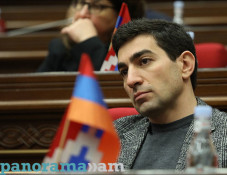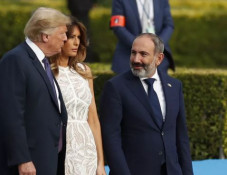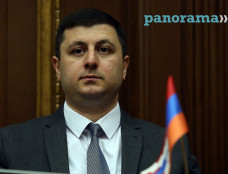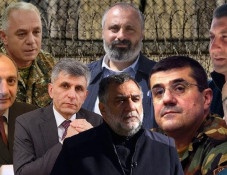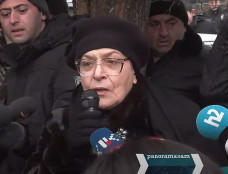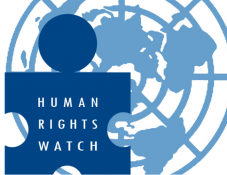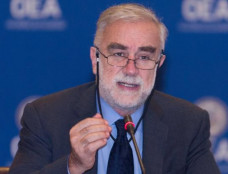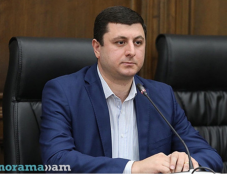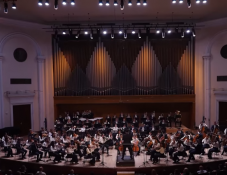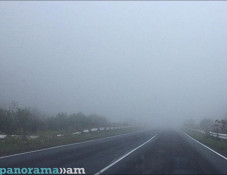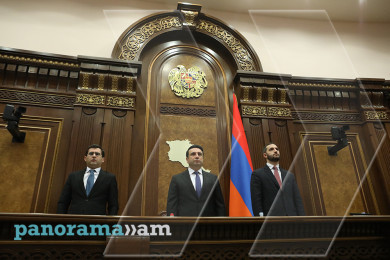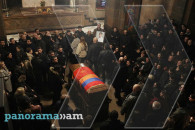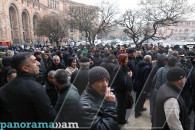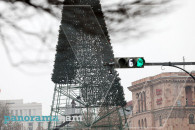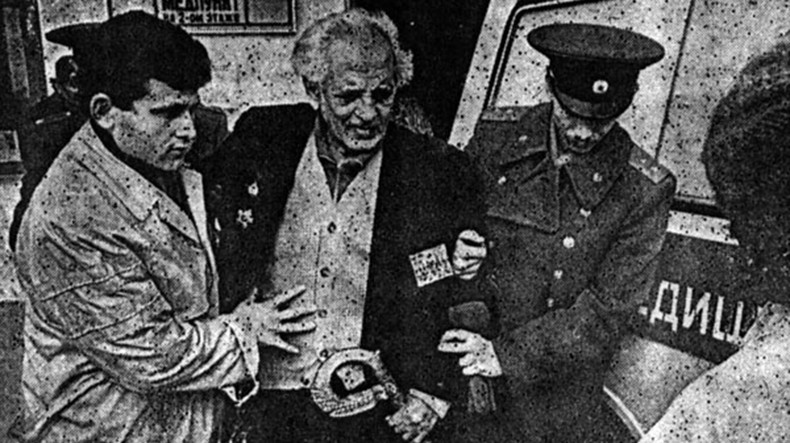
General Provotorov: PFA extremists provoked army to use arms en masse against civilians in Baku in January 1990
Below we present the last part (Part 4) of Major General of justice V. G. Provotorov’s article titled ‘Baku: The Beginning of the Nineties,’ which was published in ‘Military and History Journal’ No 7 in 1990.
Part 2 – General Provotorov about January 1990 in Baku: Women and children were seated in buses on ‘barricades’ and crowd of young drunk men behind them
Part 3 – General Provotorov about Baku events in January 1990: Defeated in January 20 clashes, Azerbaijani extremists took up acts of terrorism
Provotorov writes, “For a long time after the January 20 events, rumours were spread and maintained about dozens of thousands of victims of the ‘fascist army’ (implying the Soviet Army) and about their corpses being sunk into the sea, including in ships, barges, or buried secretly on an island. Naturally, this is an impertinent lie. The ‘fascists’ tag more suits to those who rose hand against the process of perestroika, against democracy.”
The author makes the following conclusions of the analyses of the events.
1. The quantity of the arms confiscated from the extremists, as well as the organisation of its mass production at a number of enterprises, come as a proof of the NFAz leaders’ large-scale campaign with the intention to achieve their final aims (seizure of power and liquidation of the achievements of socialism) by force of arms.
2. It was also found that if the troops delayed their actions, a demonstration was planned and prepared to be held in the city on January 20 at 14:00 to declare overthrow of the constitutional government and passing of the republic’s leadership to the extremists of the extreme right wing of the PFAz.
3. The militants’ speeches had an open anti-army militant character and aimed at breaking the moral and psychological readiness of the troops and hindering them from defending the constitutional order in the republic. An active work was carried out to attract soldiers from among the representatives of the indigenous nationality. The bet was made on managing to achieve Azerbaijani soldiers’ speeches with the arms in their hands, bring praporshiks of local nationality – who were in charge of arms depots – under their control, and sow doubts and hesitation among the officers representing Azerbaijan in the Armed Forces. The anti-army direction in the extremists’ actions was displayed in that they carried out a self-willed settlement of soldiers’ flats during the events. According to incomplete data, 105 such facts have been revealed only in Baku; 7 officers’ flats have been looted and 7 are burnt; roofs of 2 houses of officer personnel are completely destroyed by fire.
4. The attempt to set the people against the army also clearly intended to discredit the Armed Forces. By pushing women and children onto the blocks and obstructions and opening fire at the soldiers from behind their backs, the extremists strived to provoke the army to use arms en masse to shoot the civilians. This was done to entirely justify their own dirty aims, banditry and violence. The extremists still subject the locals to pressure and intimidation. The education process in two higher military colleges in Baku is disrupted because civilian teachers left the city. There is a threat of regular consolidation of the first-year students of the colleges.
There is another example to prove the army’s real authority despite the PFAz’s attempts to discredit it. Lieutenant Colonel V. I. Orlov, the commander of the landing regiment, was elected a sectary of the district committee, chairman of the executive committee of district and head of the district department of internal affairs (one for the three posts) in a meeting of party economic body in Jalilabad already after January 20.
5. Going underground, groups of the military organisation of the PFAz are apparently preparing new actions against the legal authorities and army.
6. The claims about a mass terror unleashed by the army are groundless. In addition to the already mentioned facts, it should be noted that 38 soldiers were killed over the whole period as a result of both the militants’ direct actions and the concomitant circumstances conditioned by the state of emergency.
A mass pogrom of Armenian population was committed in Baku from 13 to 19 January 1990 as a culmination of the genocide of the Armenians in Azerbaijan unfolded between 1988 and 1990. After the Sumgait pogroms (26-29 February 1988), persecutions, beatings, particularly cruel killings, public mockeries, pogroms of separate flats, seizure of property, forcible expulsions and illegal dismissals of Armenians started in Baku. Only some 35 or 40 thousand Armenians of the community of 250 thousand remained in Baku by January 1990; they were mainly disabled people, old and sick people and the relatives looking after them. The pogroms took an organised, targeted and mass nature since 13 January 1990. A large amount of evidence exists about the atrocities and killings committed with exceptional cruelty, including gang rapes, burnings of people alive, throwing people out of balconies of higher floors, dismemberments and beheadings.
The exact number of the victims of the genocide of the Armenians in Baku still remains unknown. According to different sources, between 150 and 400 people were murdered, and hundreds were left disabled. The pogroms went on for a week amid a total inaction of the authorities of Azerbaijan and the USSR, as well as the internal troops and the large Baku garrison of the Soviet Army. Those who managed to avoid death were forced into deportation. The Soviet troops were deployed to set order in Baku only on 20 January 1990.
For more detail, visit KarabakhRecords
Related news
- 26 years after genocide of Armenians in Azerbaijan: “I spent two years in hostage, in nightmarish conditions”
- 26 years after genocide of Armenians in Azerbaijan: “I remember Baku and again feel smell of burnt human flesh…”
- “This is impossible to forget and to forgive”: A Century-Long Genocide. Black January of Baku film demonstrations in US
Newsfeed
Videos





